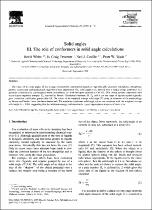JavaScript is disabled for your browser. Some features of this site may not work without it.
- ResearchSpace
- →
- Research Publications/Outputs
- →
- Journal Articles
- →
- View Item
| dc.contributor.author |
White, D

|
en_US |
| dc.contributor.author |
Taverner, BC

|
en_US |
| dc.contributor.author |
Coville, NJ

|
en_US |
| dc.contributor.author |
Wade, PW

|
en_US |
| dc.date.accessioned | 2007-02-06T13:51:57Z | en_US |
| dc.date.accessioned | 2007-06-07T10:01:51Z | |
| dc.date.available | 2007-02-06T13:51:57Z | en_US |
| dc.date.available | 2007-06-07T10:01:51Z | |
| dc.date.copyright | en_US | |
| dc.date.issued | 1995-06-14 | en_US |
| dc.identifier.citation | White, D, et al. 1995. Solid angles III:The role of conformers in solid angle calculations. Journal of Organometallic Chemistry, vol 495, 2 January, pp 41-51 | en_US |
| dc.identifier.issn | 0022-328X | en_US |
| dc.identifier.uri | http://hdl.handle.net/10204/1561 | en_US |
| dc.identifier.uri | http://hdl.handle.net/10204/1561 | |
| dc.description.abstract | The values of the solid angles Omega for a range of commonly encountered ligands in organometallic chemistry (phosphines, phosphites, amines, arsines and cyclopentadienyl rings) have been determined. The solid angles were derived from a single energy conformer in a geometry constrained in a prototypical metal environment that is with the ligand attached to Cr(co)(5). This choice permits comparison with recent ligand repulsive energies E(R). Correlations between Omega, E(R) and theta for the range of ligands studied typically gave correlation coefficients greater than 0.8. The values of the weighted average solid angle <(Omega)over bar>, have also been determined. The minimum conformer solid angle values are correlated with the weighted average solid angle (r = 0.96), suggesting that the minimum-energy conformation is a good approximate measure of steric size. Problems recognized in the definition of weighted mean cone angles have been overcome with the solid angle methodology. The method proposed is sufficiently general to be applied to any system which can be modelled by molecular mechanics methods. | en_US |
| dc.format.extent | 750125 bytes | en_US |
| dc.format.mimetype | application/pdf | en_US |
| dc.language.iso | en | en_US |
| dc.publisher | Elsevier Science SA | en_US |
| dc.rights | Copyright: 1995 Elsevier Science SA | en_US |
| dc.source | en_US | |
| dc.subject | Solid angles | en_US |
| dc.subject | Steric sizes | en_US |
| dc.subject | Ligand repulsive energies | en_US |
| dc.subject | Organic chemistry | en_US |
| dc.title | Solid angles III. The role of conformers in solid angle calculations | en_US |
| dc.type | Article | en_US |
| dc.identifier.apacitation | White, D., Taverner, B., Coville, N., & Wade, P. (1995). Solid angles III. The role of conformers in solid angle calculations. http://hdl.handle.net/10204/1561 | en_ZA |
| dc.identifier.chicagocitation | White, D, BC Taverner, NJ Coville, and PW Wade "Solid angles III. The role of conformers in solid angle calculations." (1995) http://hdl.handle.net/10204/1561 | en_ZA |
| dc.identifier.vancouvercitation | White D, Taverner B, Coville N, Wade P. Solid angles III. The role of conformers in solid angle calculations. 1995; http://hdl.handle.net/10204/1561. | en_ZA |
| dc.identifier.ris | TY - Article AU - White, D AU - Taverner, BC AU - Coville, NJ AU - Wade, PW AB - The values of the solid angles Omega for a range of commonly encountered ligands in organometallic chemistry (phosphines, phosphites, amines, arsines and cyclopentadienyl rings) have been determined. The solid angles were derived from a single energy conformer in a geometry constrained in a prototypical metal environment that is with the ligand attached to Cr(co)(5). This choice permits comparison with recent ligand repulsive energies E(R). Correlations between Omega, E(R) and theta for the range of ligands studied typically gave correlation coefficients greater than 0.8. The values of the weighted average solid angle <(Omega)over bar>, have also been determined. The minimum conformer solid angle values are correlated with the weighted average solid angle (r = 0.96), suggesting that the minimum-energy conformation is a good approximate measure of steric size. Problems recognized in the definition of weighted mean cone angles have been overcome with the solid angle methodology. The method proposed is sufficiently general to be applied to any system which can be modelled by molecular mechanics methods. DA - 1995-06-14 DB - ResearchSpace DP - CSIR KW - Solid angles KW - Steric sizes KW - Ligand repulsive energies KW - Organic chemistry LK - https://researchspace.csir.co.za PY - 1995 SM - 0022-328X T1 - Solid angles III. The role of conformers in solid angle calculations TI - Solid angles III. The role of conformers in solid angle calculations UR - http://hdl.handle.net/10204/1561 ER - | en_ZA |






